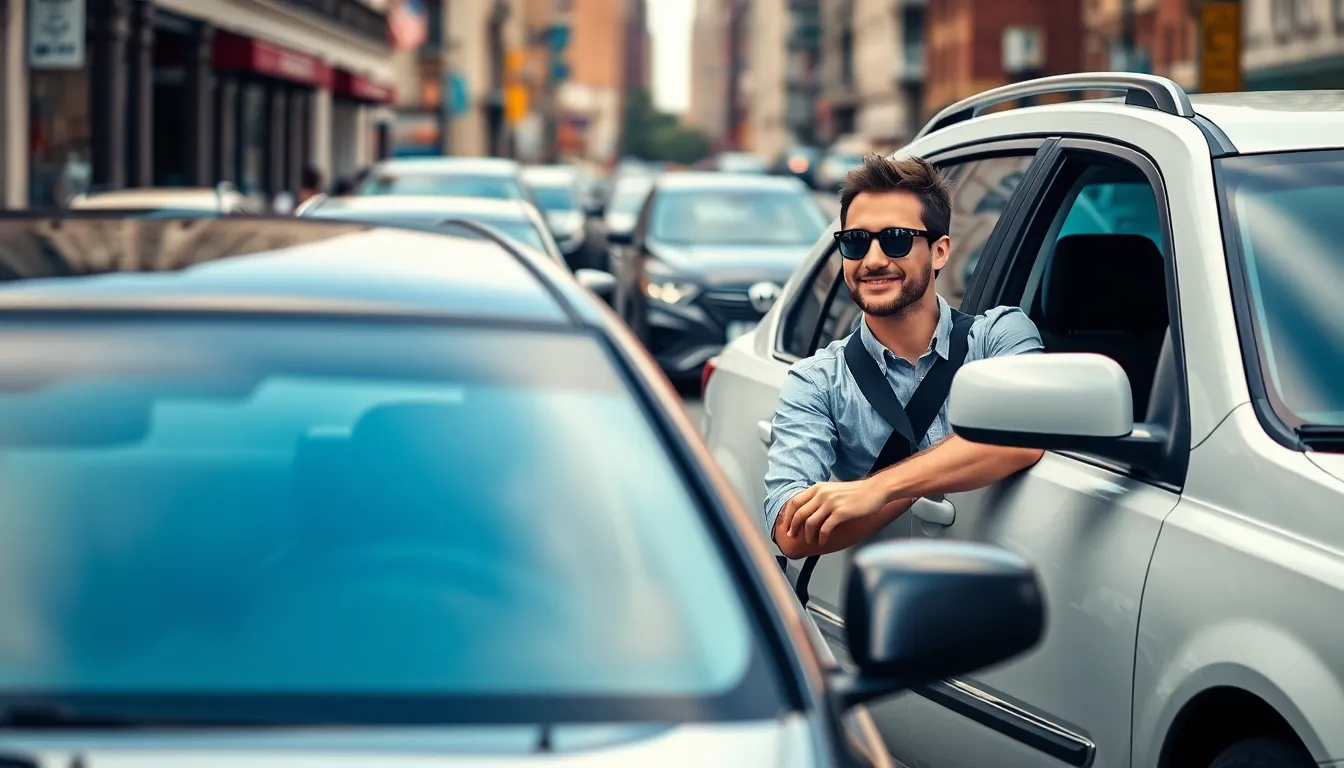Table of Contents
ToggleIn the ride-hailing world, the battle between Uber and Lyft is like a showdown between two heavyweight champions. Each promises to get you where you need to go without breaking the bank. But when it comes to choosing the cheaper option, things can get a little murky. Is it Uber’s sleek black cars or Lyft’s friendly pink mustaches that’ll save you more cash?
Overview of Ride-Sharing Services
Ride-sharing services revolutionized transportation. Uber launched in 2009, establishing a global presence with operations in over 900 metropolitan areas. Lyft, founded in 2012, operates primarily in the United States and Canada, emphasizing a community-driven approach. Both companies utilize mobile apps to connect riders with drivers efficiently.
Pricing structures differ between Uber and Lyft. Factors affecting costs include location, demand, time of day, and ride type, such as standard, luxury, or shared options. Surge pricing often occurs during peak hours for both services, leading to increased fares.
Ride-sharing services also offer various features. Uber provides options like UberX, UberXL, and Lux, catering to diverse customer needs. Lyft features similar choices, such as Lyft XL and Lux Black, appealing to consumers looking for an upscale experience.
Safety remains a priority for both platforms. Riders can share trip details with contacts and access in-app safety features like emergency assistance. Driver background checks are standard procedure for both Uber and Lyft, ensuring a level of safety for passengers.
Promotions frequently influence riders’ decisions. Both companies offer discounts or credits to attract new users and retain loyal customers. These promotions may vary based on location, making it essential for users to check their apps regularly for the best deals.
Convenience plays a crucial role in choosing a ride-sharing service. Uber and Lyft allow riders to request a vehicle within minutes, providing real-time tracking during rides. Passengers can view driver ratings and vehicle details before getting into a car, enhancing the overall user experience.
Cost Comparison

Determining the overall cost between Uber and Lyft requires analyzing various elements involved in pricing. This comparison highlights factors that contribute to the final fare.
Base Fares
Base fares differ significantly between Uber and Lyft. For instance, Uber typically charges a flat base fare that varies by region. Lyft’s base fare also changes but often includes a slightly lower starting point. In urban areas, Uber’s base fare can average around $2.50, while Lyft’s may start at approximately $2.00. This initial difference influences the overall cost of rides.
Surge Pricing
Surge pricing creates fluctuations in fare during peak hours or high-demand situations for both services. Uber employs multipliers that can significantly increase fares, often reaching 2x or 3x normal prices during busy times. Lyft uses a similar model, activating surge rates based on demand. Riders may see price increases of up to 150% during special events or inclement weather. Awareness of these surge pricing patterns helps users choose more cost-effective travel times.
Additional Fees
Various additional fees impact the final fare for rides on both platforms. Airport fees apply to rides that start or end at airports and can add $5 or more to fares. Lyft charges tolls directly to riders, while Uber may include toll costs in the total. Lyft may also have cancellation fees, generally around $5 for late cancellations. Uber’s cancellation fee might range from $5 to $10, depending on timing. Understanding these added costs provides clearer insight into choosing the more affordable option.
Factors Influencing Prices
Determining whether Uber or Lyft is cheaper involves understanding various price-influencing factors. Each aspect plays a crucial role in fare calculations.
Location Variability
Location affects pricing for both Uber and Lyft. Urban areas typically feature higher fares due to increased demand. Conversely, rural areas may showcase lower rates as competition decreases. Regional regulations also impact fares; for example, some cities impose additional fees. Riders in metropolitan zones often experience more premium pricing than those in smaller locales.
Time of Day
Time of day significantly influences ride prices for both services. Peak hours often lead to surge pricing, which increases fares substantially. For instance, morning and evening commutes attract higher demand, driving prices up. Early mornings and late nights generally offer more affordable rides due to reduced demand. Users should consider this timing when comparing potential costs.
Type of Ride
Type of ride determines fare differences between Uber and Lyft. Both services provide various options, such as standard, shared, and luxury vehicles. Uber X and Lyft’s standard rides frequently serve as budget-friendly choices. Premium options, like Uber Lux or Lyft Lux Black, command higher prices. Additionally, choosing shared rides can lower costs. Users should always evaluate these options to find the most economical choice.
User Experience
User experience plays a crucial role in choosing between Uber and Lyft. Each company aims to deliver quality service and convenient ride availability to meet customer needs.
Quality of Service
Customers frequently evaluate the quality of service provided by both platforms. Timeliness stands out as a priority; Uber often delivers rides in less than five minutes in urban areas, while Lyft averages slightly longer wait times. Riders report varied experiences with driver professionalism and vehicle cleanliness, yet both services feature background checks for drivers. Additionally, both Uber and Lyft emphasize safety through in-app options like trip sharing. Promotions and discounts enhance the experience, offering riders significant savings. Customer support is another consideration; users often express differing levels of satisfaction regarding response times and issue resolution.
Availability of Rides
Ride availability fluctuates based on location and time. Urban areas usually see higher ride availability due to demand, with Uber providing approximately 30% more drivers than Lyft during peak hours. In rural locations, both options often reduce ride availability, impacting wait times. Events, holidays, and weather conditions can lead to noticeable variations in ride availability. Customers may encounter longer wait times during busy periods, showcasing the unpredictability in service. Overall, understanding ride availability helps users make informed choices based on their specific needs.
Choosing between Uber and Lyft often comes down to individual preferences and specific circumstances. While Uber may offer faster rides in urban areas Lyft’s community-driven approach appeals to many riders. Pricing varies based on location and demand making it essential for users to compare fares before booking.
Promotions and ride options also play a significant role in determining the best choice for a given situation. Ultimately riders should consider their priorities whether it’s cost speed or user experience to make an informed decision. Both services have their strengths and weaknesses and understanding these can lead to a more satisfying ride-hailing experience.




